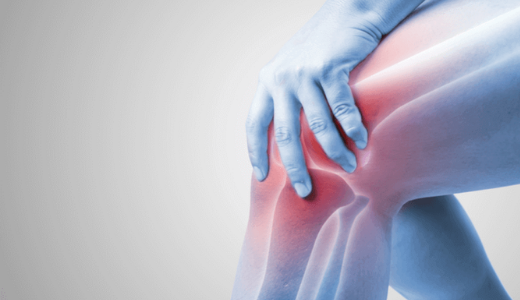Best Joint Pain Treatment In Nagpur

Best Joint Pain Treatment In Nagpur
What Is Joint Pain?
Joint pain refers to discomfort, soreness, or inflammation in the joints, the areas where two or more bones meet. It can occur in any joint of the body, including the knees, hips, shoulders, wrists, and hands. Joint pain may be acute (temporary) or chronic (long-lasting), and it can range from mild discomfort to severe pain.
Common causes of joint pain include:
- Arthritis: Conditions like osteoarthritis or rheumatoid arthritis can cause inflammation and pain in the joints.
- Injury or Trauma: Fractures, sprains, or dislocations can lead to joint pain.
- Tendonitis: Inflammation of the tendons can result in joint pain, particularly in the shoulders, elbows, and knees.
- Gout: A form of arthritis caused by uric acid buildup, leading to painful joint flare-ups.
- Overuse: Repetitive movement or overexertion can strain joints and lead to pain.
Symptoms of Joint Pain
Joint pain symptoms vary depending on the underlying cause, but common symptoms include:
- Pain: A dull ache or sharp pain in the joint.
- Swelling: Swelling around the joint, often caused by inflammation.
- Stiffness: Limited range of motion and difficulty moving the joint.
- Tenderness: Sensitivity or soreness when the joint is touched or moved.
- Redness and Warmth: Inflammation may cause the skin around the joint to appear red and feel warm to the touch.
Effective Joint Pain Treatment Options
There are various treatment options available for joint pain, ranging from conservative methods to advanced medical interventions. The best treatment depends on the cause, severity, and location of the pain.
1. Non-Surgical Treatments
For mild to moderate joint pain, non-surgical treatments are often the first line of defense:
- Pain Relief Medications: Over-the-counter (OTC) pain relievers like acetaminophen or nonsteroidal anti-inflammatory drugs (NSAIDs) such as ibuprofen or naproxen can help alleviate pain and inflammation.
- Physical Therapy: Physical therapy is often recommended to strengthen the muscles surrounding the joint, improve flexibility, and increase mobility.
- Rest and Ice: Resting the affected joint and applying ice can reduce swelling and relieve pain, particularly after injury or overuse.
- Joint Support Devices: Braces, wraps, or supports can stabilize the joint and reduce pressure, particularly in weight-bearing joints like the knee or hip.
- Corticosteroid Injections: For inflammation and severe pain, corticosteroid injections can provide targeted relief by reducing inflammation in the joint.
- Hyaluronic Acid Injections: Used primarily for knee osteoarthritis, hyaluronic acid injections can lubricate the joint and improve mobility and comfort.
2. Advanced Treatments
For more severe joint pain or conditions like arthritis, advanced treatments may be necessary:
- Platelet-Rich Plasma (PRP) Therapy: This treatment involves injecting concentrated platelets from the patient’s blood into the joint to promote healing and reduce inflammation.
- Stem Cell Therapy: Stem cells derived from the patient’s own body can help repair damaged tissue and promote regeneration of joint cartilage, offering relief for conditions like osteoarthritis.
- Joint Replacement Surgery: For advanced arthritis or severe joint damage, total or partial joint replacement surgery may be recommended. This procedure involves removing the damaged joint and replacing it with a prosthetic one, typically performed for the knee, hip, or shoulder joints.
- Arthroscopy: In minimally invasive surgery, an orthopedic surgeon can use small incisions and a camera to diagnose and treat joint conditions, including repairing torn cartilage or removing damaged tissue.
Lifestyle Changes and Self-Care Tips for Joint Pain Relief
In addition to medical treatments, certain lifestyle changes and self-care practices can significantly help manage joint pain:
- Exercise Regularly: Low-impact exercises, such as swimming, walking, or cycling, can help strengthen the muscles around the joint and improve mobility. Avoid high-impact activities that can aggravate joint pain.
- Maintain a Healthy Weight: Excess weight places additional stress on weight-bearing joints, such as the knees and hips, contributing to joint pain. Maintaining a healthy weight can help reduce strain on your joints.
- Eat an Anti-Inflammatory Diet: Incorporate foods rich in omega-3 fatty acids (like fish and flaxseeds), antioxidants (like fruits and vegetables), and anti-inflammatory spices (like turmeric) to help reduce inflammation.
- Use Heat and Cold Therapy: Alternating hot and cold compresses can soothe pain and reduce inflammation in the joints.
- Stay Hydrated: Drinking plenty of water helps maintain joint lubrication and supports overall joint health.
When to Seek Medical Help for Joint Pain
While many cases of joint pain can be managed with self-care and non-surgical treatments, it’s important to seek medical attention if:
- The pain is severe, persistent, or worsening.
- You experience joint instability, difficulty walking, or limited range of motion.
- Swelling, redness, or warmth around the joint is present.
- You’ve recently sustained an injury or trauma to the joint.
- The pain is associated with systemic symptoms, such as fever, fatigue, or unexplained weight loss.
